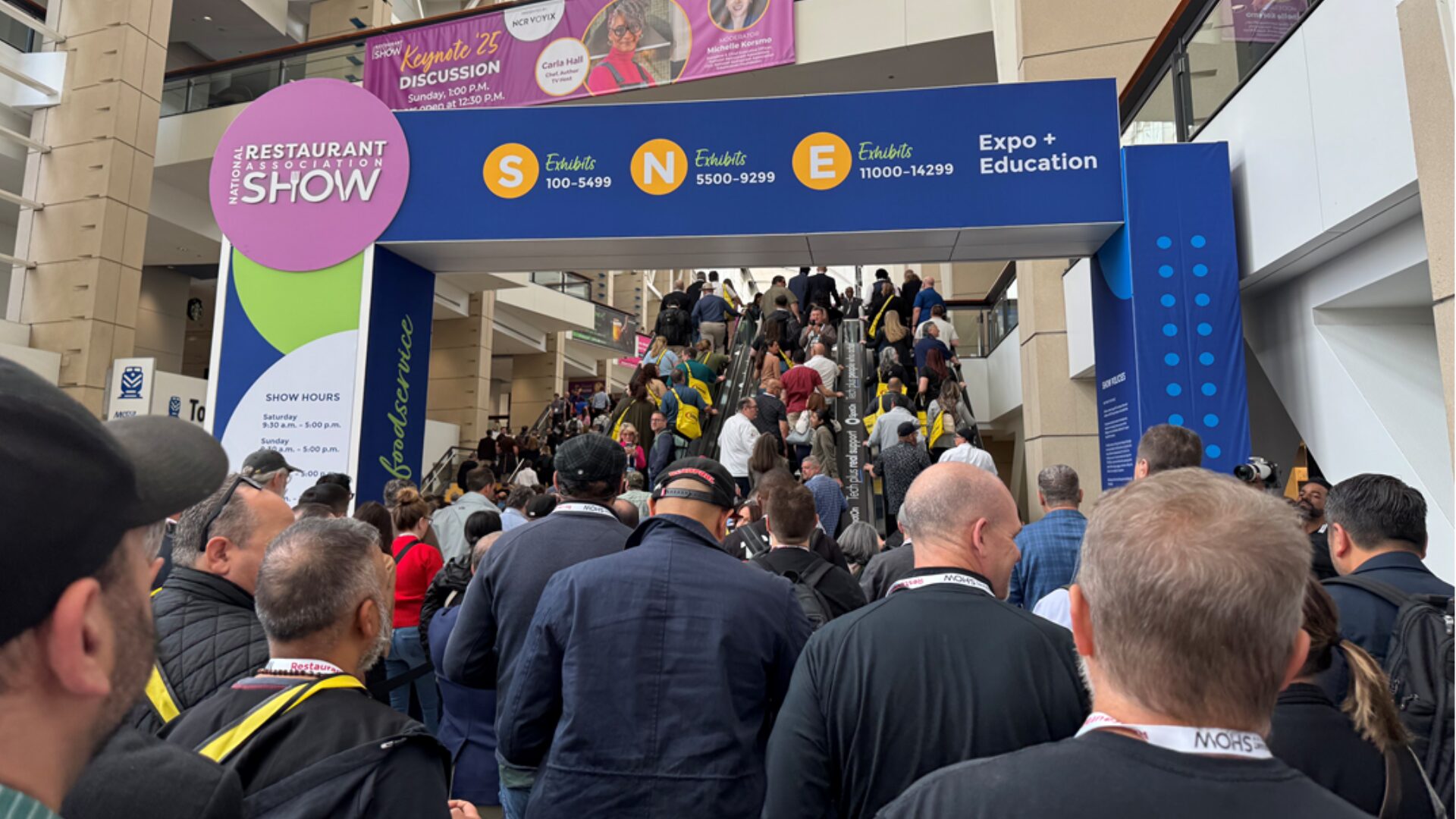This is part 1 of a 3-part series.
In late February, Walmart agreed to acquire Vizio for $2.3 billion in fiscal year 2025 subject to regulatory clearance and other closing conditions. Its goal is simple: to compete head-to-head with Amazon and act as a media and advertising giant. The move positions Walmart for several opportunities and fundamentally changes the nature of its business:
- Walmart can now sell ads through streaming services on television. Many of those will be specifically for groceries.
- If it acquires a streaming service, that effect will be amplified. It’s already produced a well-received movie.
- Walmart has been building its grocery and e-commerce/omnichannel business for years; grocery is built on razor-thin margins, and new revenue streams via advertisements will only bolster its already robust grocery business, essentially one-upping Amazon in the food department with over 4,500 physical stores in the U.S.
As retail media networks continue to wield outsize power in the realms of consumer data and granular inventory right-sizing, the Vizio acquisition is one of the first major warning shots across the sea of retailers, advertisers, and consumers, at once both transformative for Walmart and a galvanizing action that moves the juggernaut further into omnichannel dominance, putting it on par with businesses like Amazon, Disney, and more.
But the future remains unwritten. As technology continues to dictate business (didn’t it used to be the other way around?), what retail actually looks like in three, five, seven years is anybody’s guess. Who will rise? Who will fall? How will AI and devices like the Apple Vision Pro change how consumers approach the market? How will brand collaborations evolve, such as Target – which recently launched its own paid subscriber program, Target Circle 360 – and Starbucks, an early leader in omnichannel integrations through its app? What about private label and its wildfire proliferation (and scorching effect) on name brands and their once-loyal audiences? How will consumers engage with their preferred retailers, grocers, brands, and even influencers? What about TikTok Shop, Temu, and other digital-first grocery and retail options?
More than anything, what else haven’t we dreamed of yet in this space? What remains to be conjured for the common consumer?
The Food Institute spoke to a panel of experts from across the spectacular spectra of advertising and retail. Here’s what we discovered.
The 10,000-ft. View of Retail
The further dissolution of the traditional retail store is at hand. The business of retail is by definition the sale or consignment of goods from a company to a consumer. But as physical stores dwindle and change, so too will the definition of retail.
In many ways, it already has.
“Retail in five years is likely to have evolved to let the mundane tasks be taken care of by technology and automation, while search and discovery become the focus of not only shoppers, but retail workers as well,” Kandi Arrington told TFI. Arrington is Group SVP, Customer Development, at The Mars Agency.
“In this environment, physical and virtual stores will increasingly play the role of helping shoppers discover new and different items,” she added, “and stores in the future will use more of their footprint for warehousing, while separating out the front of the store for discovery, demoing and solutions.”
Arrington predicts that in five years, retail will cease to encompass the idea of going shopping or running errands and instead bring to mind a more fluid experience – “a moment in time,” according to Arrington where goods or services are more often delivered outside of a physical retailer’s footprint.
Nonetheless, the retail store itself will persist, albeit in a different form.
“Despite the initial challenges brick-and-mortar retailers faced during the pandemic, today, 85% of all retail sales in the United States still occur in physical stores,” said David Gottlieb, CRO at Trax Retail, to TFI.
“In fact, store openings are outpacing closures, showing the desire for and resilience of traditional retail.”
Nonetheless, Gottlieb said a byproduct of the pandemic was an entirely new type of consumer – one who began to experiment more with e-commerce first out of necessity, and then out of convenience and experience, helping foster a wave of digital-first experiences comprised not of blue water, but green dollars.
“The shift that we are seeing is that the way people shop in physical stores has changed; they now expect more from their in-store experiences, as they’ve gotten used to the convenient and flexible options offered by digital platforms,” he added. “Consumers want to be able to interact with stores in new ways, including the ability to search, filter and find products in the store the same way they do online.”
At his keynote address at CES, Walmart CEO Doug McMillon and a coterie of other Walmart and Sam’s Club executives described the future of adaptive retail. During her portion, Sam’s club chief merchant Megan Crozier described the seamless future of Scan & Go technology at Sam’s Club – grab your items, scan them with the mobile app, pay via the same, and exit the store through a Walmart-brand, sky-blue gate that scans and recognizes their embedded digital receipt; no lines, and no problem.
But what about the future of entering a big-box retailer?
“By 2030, visiting a Target, Walmart, or Costco won’t just be about shopping,” said Diana Zheng, head of marketing at Stallion Express, a leading e-commerce shipping company from Canada, “It will be an experience. An immersive experience. A personalized experience, even a social experience.”
“Imagine stepping into a Target, Walmart, or Costco,” she challenged TFI, laying bare the following evolution consumers (and operators) can and should expect from their competitors (and themselves):
- Omnichannel Nirvana – The boundaries between online and offline are blurred. Virtual shelves display infinite products, ready to be bought and delivered to your door or picked up in-store. Try on? Smart mirrors customize outfits based on your appearance and fit.
- Loyalty Amplified – Instead of plastic cards, biometric recognition identifies you instantly, allowing you to unlock exclusive offers, rewards, and early access to products. Gamification features such as points and badges encourage further engagement.
- Delivery on Demand – Need it today? Drones transport orders to your vehicle or pick-up area. Want same-day delivery? Autonomous vehicles work seamlessly with in-store pick-up.
- Collaborative Hubs – It’s not just about browsing the aisles anymore. Stores are turning into community hubs. Kitchenware classes, artisan pop-ups, or in-store cafe-fueled co-working spaces are examples.
- AI-powered Concierge – Robots greet you warmly, learn about you through loyalty programs and past purchases, and create custom shopping experiences. Need a specific product? Say goodbye to aisle busters – AR wayfinding takes you where you need to go.
Casey Huffling, SVP, Specialty, at ScanSource told TFI that AI will be used to not only automate and tailor these processes in the name of the consumer experience, but to also help retailers streamline their operations for optimal efficiency.
“With self-service comes the need for continued hardware and software improvements to aid loss prevention,” she said, “and AI and machine learning cameras will be incorporated to identify an item itself, and not simply read a sticker that can be swapped from an inexpensive item to an expensive item. Additionally, RFID tags coordinating with software to track and enable items will be more widely incorporated to protect against theft.”
There’s that word again – AI. It’s no secret that it’s poised to change everything. But it’s not the only new tech in town.
Stay tuned for Part 2 of The Future of Retail – “Tomorrow’s Tech”












